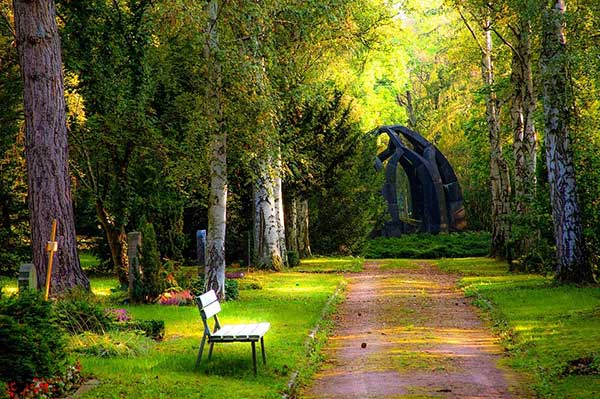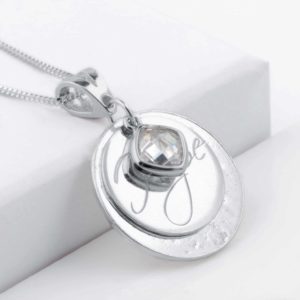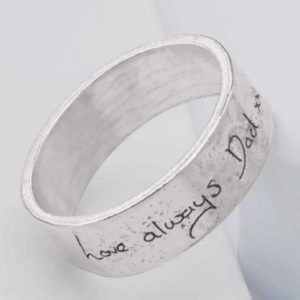Cremation has long been the most common option when a person passes away. A 2016 YouGov poll showed that more than three times the amount of people preferred the idea of being cremated over burial for themselves and their loved ones. Recent statistics show that more than 75% of Britons are cremated after they pass away, compared to just 18% who are buried.
You might be considering cremation for your own funeral plans, or perhaps you are in the process of planning a loved one’s funeral. Learning all about cremation can help to set your mind at ease and help you understand what will happen at every stage of the process.
What Is Cremation?
The term cremation refers to the combustion of a corpse after death. Extreme heat is applied to the body in order to reduce it to ash and bone fragments. The resulting ash is called cremains; it consists of mineral fragments, carbon, bone other inorganic materials.
Cremation is an integral part of numerous religions (including Hinduism and Buddhism). It is forbidden in Islam, Orthodox Christianity, and Orthodox Judaism. I was historically forbidden in the Catholic Church, but is now fully accepted. In modern Britain it is the most popular interment option (far ahead of burial in a coffin), and the cremation process is often a part of the funeral ceremony.
What Happens At A Crematorium Funeral?
Cremation rituals are different in cultures and countries around the world. A Hindu cremation ceremony on the banks of the River Ganges is going to be very different from a quiet family funeral in the UK. In North America, a traditional funeral occurs, often with an open casket, and the cremation itself takes place at a later date and time. However, in the UK, the cremation process is often integrated into the funeral.
While everyone is different, you can often expect a British funeral held at a crematorium to happen along these lines:
- A coffin containing the body will be brought to a religious or non-religious chapel at the crematorium, and will be set on a raised platform.
- Guests will arrive at the location. Unlike services held in churches or halls, crematoriums often have many bookings each day, and you will need to keep to a strict schedule.
- The service will usually be approximately 30 minutes in length. This can include religious content, songs, and eulogies from friends and family.
- After the remembrances, the committal will begin. This is the point at which the coffin is removed from the room to start the actual cremation process. The coffin may be wheeled away manually, or placed on a conveyor belt to take it towards the furnace. It can also be lowered into the floor, or curtains can be closed around it. This is often a very emotional moment.
- As guests leave, the celebrant will lead everyone outside. The family will often be on hand to receive flowers and condolences.
- Many families choose to organise a wake after the service. More toasts and eulogies might occur, and people will share their memories of the deceased over food and drinks.
Guests leave the service. The celebrant or funeral director will usually show guests the way out. There is usually an opportunity at this point to see the flowers that have been donated, and to give condolences to the family.
The wake is held (optional). There’s often a wake after the funeral service. This is a reception at which food and drinks are served. Here, guests can talk and share their memories of the person who has died.
How Is a Body Prepared For Cremation?
In order to prepare for cremation, the body is first washed, and thoroughly cleaned. Embalming will only occur if a public viewing has been arranged. At this point all jewellery is removed in order for the family to keep it safe, and all medical devices are extracted from the body. This includes pacemakers, prosthetics, and any other device containing batteries. Metal pins, screws and plates will stay in place, as they do not affect the furnace chamber.
The body is then dressed and placed in the coffin. Hair styling and make up might be applied if the family has arranged a viewing.
How Does Cremation Work?
The cremation process occurs in a specially designed chamber, sometimes referred to as a retort. The chamber is preheated to an intense temperature that ranges from 870–980 degrees Celsius. A mechanised door is opened, the coffin is transferred inside, and then the door is quickly shut order to prevent heat loss.
The coffin will burn first, and the body is then exposed to the flames. The intense heat dries out the body, the hair and skin will incinerate, and the muscles will contract and char into ashes. The bones do not burn; instead, they calcify and reduce to a crumbling texture. All gases that are released are ventilated through a special exhaust system. No odour is produced, as a specific process vaporises all smoke and gases.
While some crematories utilise a secondary afterburner to break the body down further, others have the technician do this with specific tools. The cremains are allowed to cool, and then all metal (screws, dental gold, hinges from the casket) is collected with a strong magnet and disposed of according to local law.
The cremains are then pulverised further using a machine called a cremulator. This results in a fine sand-like powder that is transferred into an urn or box and given to the relatives. Some people choose to spread their loved one’s ashes in a beloved location, while others use a small portion of the cremains to create meaningful ashes jewellery.
How Long Does Cremation Take?
The actual cremation process takes between one and three hours, and results in 1.5 – 3 kilos of cremains. However, you might have to wait between 3 to 15 business days to secure an appointment at your local crematorium. Certain parts of the country experience regular delays and backlogs.
How Much Is Cremation?
As with any funeral, the cost of the entire ceremony can vary dramatically depending on setting, number of guests, the wake, and the flowers. However, the standard pricing for a cremation with no ceremony is roughly £1400 in England & Wales, and £1200 in Scotland (owing to different regulations around doctor’s certificates).
Frequently Asked Question About Cremation:
How Long Is A Cremation Service?
Every service is different, but the standard is 30 – 45 minutes.
Can You Scatter Ashes At Sea?
Yes, in the UK the scattering of ashes at sea or in rivers is common and legal.
What Are Human Ashes Made Of?
Human ashes are called cremains, and they are comprised mainly of dry calcium phosphates, along with minerals, including salts of sodium and potassium.
How Much Ash Is There After Cremation?
The amount of cremains differs person to person, and depends mainly on the bone density of the deceased. An adult’s cremains usually weight between 1.5 – 3 kilograms.
What’s Cheaper: Burial or Cremation?
Cremation is the more economical option, as a UK cremation and funeral costs an average of £3,311. With burial, the cost is nearly 25% more, at £4,257 for a burial (not including the cost of the plot)
How Long After Death Is A Funeral Cremation?
Traditionally, a funeral is often held around one week after the death. However, crematoria can be fully booked for weeks at a time, and so this can take longer to arrange.
How Long After Cremation Until You Get The Ashes?
The cremains are usually ready to be picked up or delivered within seven to ten days. They can be presented to you in a box, an urn or another container of your choice.
Summary
It is never easy to talk about death, but learning about cremation can make your decisions much easier. As you can see, cremation is a common, respectful and economical choice for interment.








